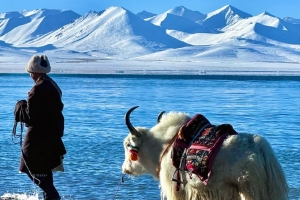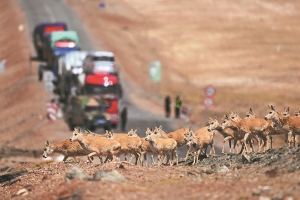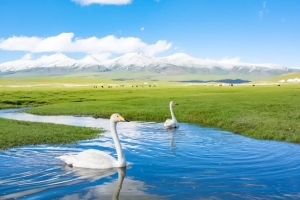Tibet, located in the southwestern part of China, is a region with a unique ecosystem and rich biodiversity. Its plateaus, grasslands, mountains, and lakes form natural habitats for a variety of animals, attracting nature enthusiasts and wildlife observers from all over the world. From the mysterious snow leopard to the adorable Tibetan antelope, from the soaring Tibetan eagle to the leisurely yaks, the animals of this land are an integral part of the stunning natural landscapes of Tibet.
In this article, we will take you into the world of Tibet’s wildlife, introducing the animals that live in this magical land and the ecosystems they inhabit. Whether trekking through majestic mountains or observing wildlife near peaceful lakes, Tibet offers a unique experience for every traveler.
1. Snow Leopard: The Mysterious Hunter of the Highlands
The snow leopard, a mysterious and agile large cat, inhabits the high mountains of Tibet. Its coat blends seamlessly with the snow, making it a natural expert in camouflage. Snow leopards primarily live in the altitudes ranging from 3,000 meters to 5,000 meters, where they are considered apex predators in the Tibetan ecosystem. Due to their elusive nature and the special characteristics of their habitat, snow leopards are not easily spotted. Every year, animal photographers and nature lovers travel to Tibet, challenging themselves to catch a glimpse of this elusive creature.
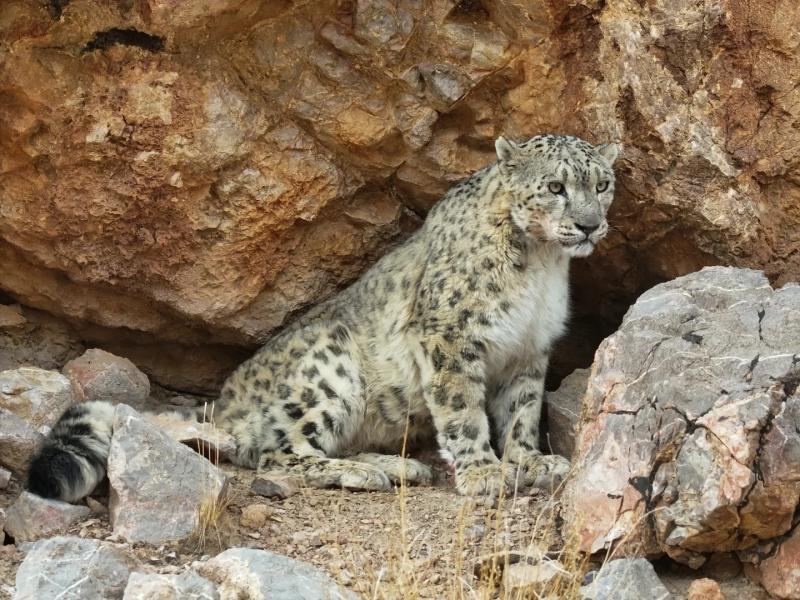
Snow Leopard
2. Tibetan Antelope: The Elegant Figure of the Grasslands
The Tibetan antelope is one of the most representative animals of the Tibetan plateau, gracefully running across the grasslands. Their fur ranges from yellow-brown to white, and they possess remarkable resilience, allowing them to survive in the harsh plateau environment. Each winter, Tibetan antelopes gather in the Kokoxili region in eastern Tibet for their long migratory journey. Kokoxili is an important habitat for the Tibetan antelope and is one of the largest and most protected nature reserves in the world.
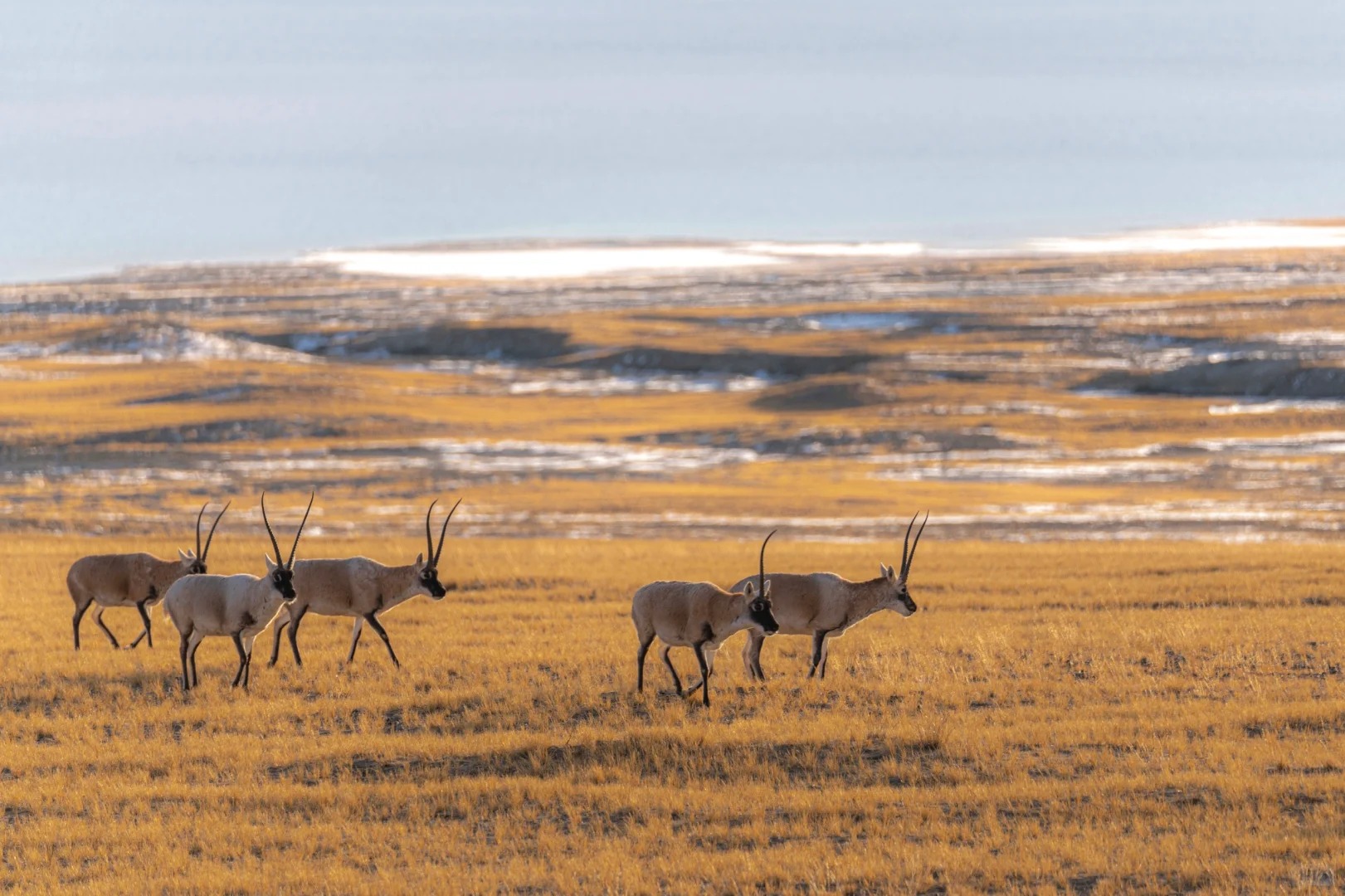
Tibetan Antelope
3. Yak: The “Guardian” of the Tibetan Grasslands
The yak is one of the most common large livestock on the Tibetan plateau, often referred to as the “cow of the plateau” by the local Tibetans. It has adapted to the harsh conditions of Tibet, with thick fur that helps it withstand the cold climate. Yaks are not only important working animals for the Tibetan people but are also indispensable in their daily lives. Yak milk, meat, and leather are widely used in Tibetan culture. On the grasslands, yaks roam leisurely, becoming an iconic part of the Tibetan highland scenery.
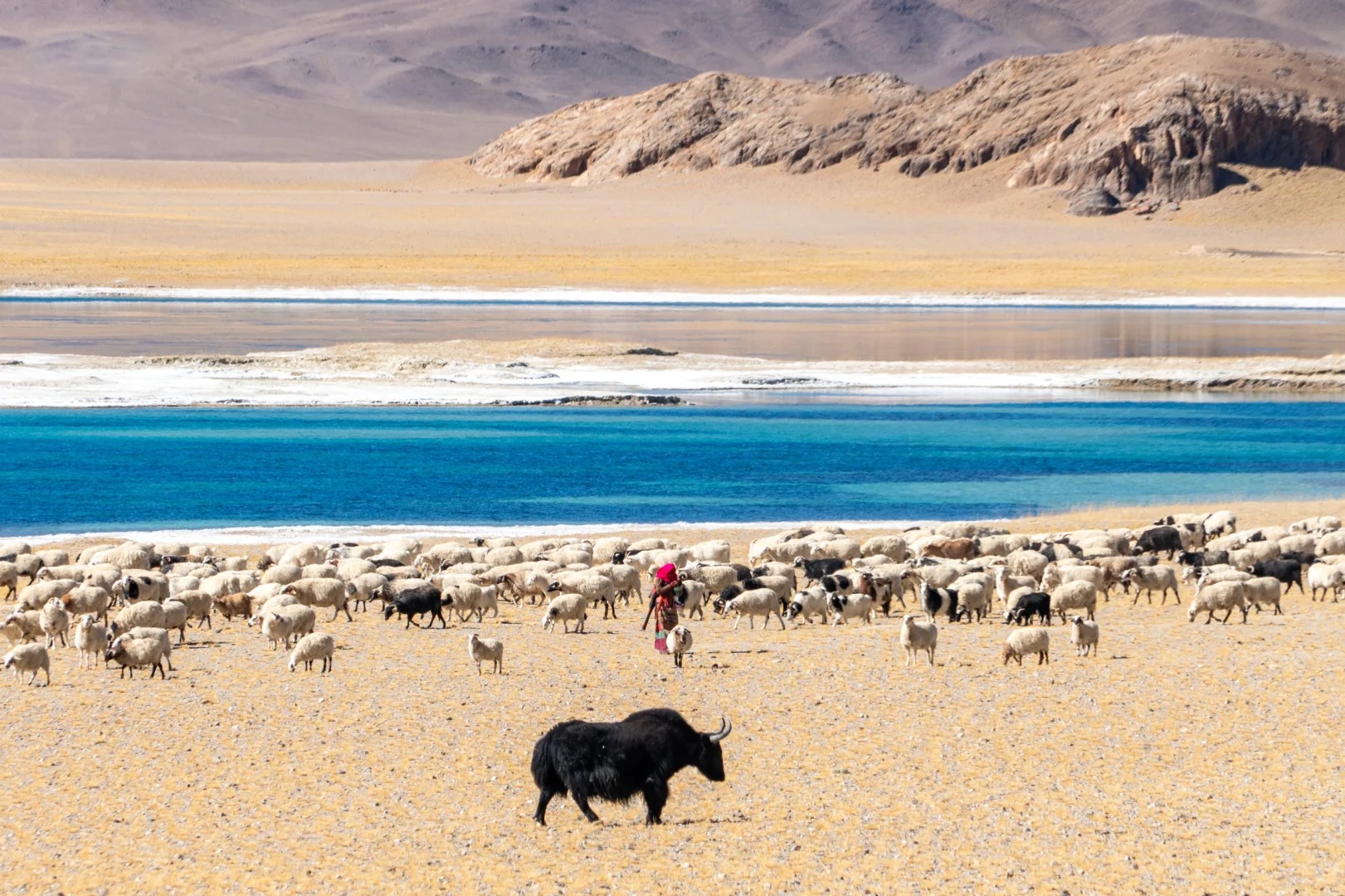
Yak
4. Tibetan Eagle: Soaring Above the Snow-Capped Peaks
The Tibetan eagle, also known as the mountain eagle, is one of the most prominent birds of prey in the highlands of Tibet. It is a large bird with broad wings, capable of soaring at high altitudes. Tibetan eagles play an important role as top predators in the ecosystem, preying on small mammals and birds. Their flight is graceful, and they seem to merge with the vast landscape below. During the autumn and winter months, Tibetan eagles can be seen circling over the Tibetan grasslands in search of prey.
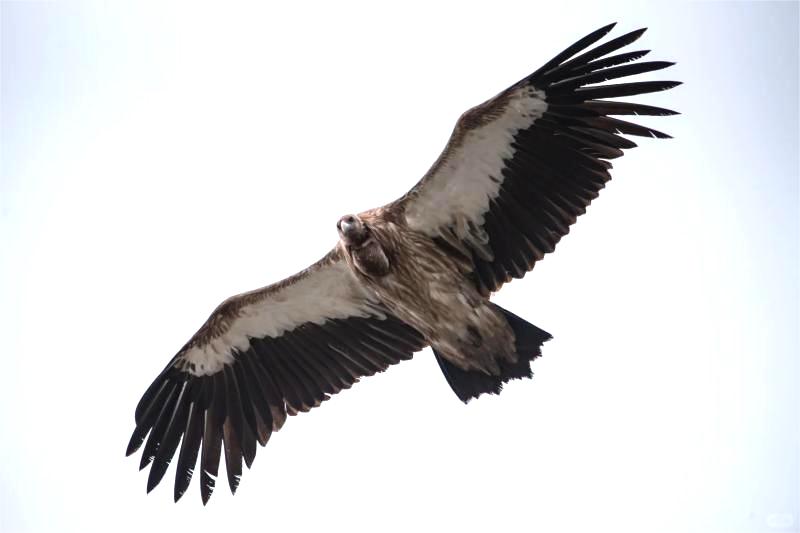
Tibetan Eagle
5. Tibetan Macaque: The Agile Resident of the Highlands
The Tibetan macaque primarily inhabits the forested and mountainous areas of southern Tibet. These monkeys live in groups and are known for their lively and alert nature. Their fur is usually light gray, and they feed on fruits, seeds, and occasionally insects. In the tourist areas of Tibet, especially within forest reserves, it is common to spot these agile monkeys. They are intelligent and adaptable, thriving in the complex environment of the high-altitude regions.
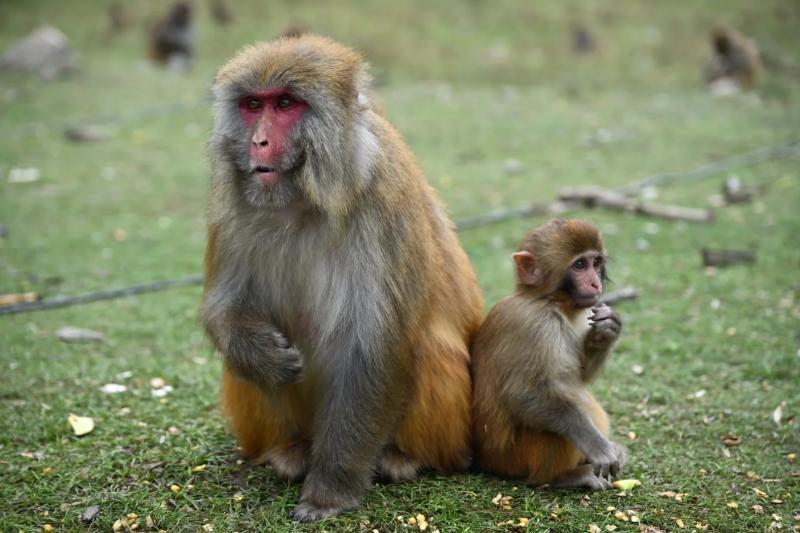
Tibetan macaque
6. Travel Tips: How to Get Close to Tibet’s Wildlife
1)Maintain a Safe Distance: Tibet’s wildlife tends to be wary of humans, so it is important to avoid getting too close. Respect their habitats and lifestyles.
2)Respect Local Culture: Many animals in Tibet hold significant cultural and religious meaning. For example, yaks are considered sacred by Tibetans. Understanding this cultural background helps you better appreciate the symbolic importance of these animals.
3)Choose the Right Travel Route: If you wish to observe Tibet’s wildlife up close, consider joining a professional wildlife observation group or an eco-tourism route, guided by experienced leaders.
Tibet is not just a geographic destination; it is a spiritual and mystical ecological paradise. The animals here coexist harmoniously with the environment, forming the unique natural landscape of Tibet. Whether you wish to unravel the mystery of the snow leopard or enjoy watching Tibetan antelopes galloping across the grasslands, Tibet’s wildlife world will always offer you unexpected delights and emotional connections.



